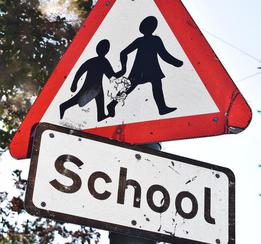SecurityAdvisoryCouncil.com
Security Risk Analysis - Issues - Strategies - Solutions - Resources
Security Risk Advisory Consultants - Advanced Security Planning
Security MostWanted For America!
SECURITY FOR OUR COMMUNITY
Safety & Security Issues -Strategies - Solutions
A Security Watch Educational Experience...For You & Our Communities
SecurityMostWanted.com - SecurityAdvisoryCouncil.com - The Security Most Wanted Group ALL RIGHTS RESERVED
Personal Security Tip
University of Kansas Medical Center
Methods of reducing criminal opportunity: Be alert and aware! While you are walking, keep
your mind on what is going
on around you. Know who is
near you at all times.
Community Safety
Participate in a Neighborhood Watch. Work with neighbors to monitor and report suspicious activities in your area. This fosters a sense of collective responsibility and communication.
Get to know your neighbors. Building good relationships with those around you creates a support network where you can look out for one another's homes and families.
Organize clean-ups. Community clean-up events can reduce antisocial behavior and make your neighborhood feel safer and more well-maintained.
Support local businesses. Thriving local commerce can contribute to a stronger, safer community by increasing foot traffic and community interaction.
Staying Safe Out In Public
Being safe in public relies on a combination of situational awareness, confidence, and preparedness. By taking simple precautions, you can reduce your risk of harm and increase your confidence in various public settings.
General tips for situational awareness
Keep your head up and stay alert. Avoid being distracted by your phone, music, or other devices, as this can make you appear vulnerable. Scan your environment for anything unusual or for people behaving strangely.
Trust your instincts. If a person or situation makes you feel uneasy, remove yourself from the area. Listen to that "inner voice," as it can be your most effective safety tool.
Project confidence. Walk with purpose and make appropriate eye contact with people around you. Criminals often target those who appear unsure or vulnerable, so acting self-assured can be a deterrent.
Use well-lit, populated areas. Stick to busy streets and avoid shortcuts through alleys or isolated areas, especially at night.
When you are walking or using public transport
Walk with friends. There is safety in numbers, particularly at night or in less-crowded areas.
Conceal valuables. Keep your phone, wallet, or other expensive items out of sight. Carry a purse or bag close to your body with zippers fastened.
Have your keys ready. As you approach your car or home, have your keys in hand so you can open the door immediately. Before getting into your vehicle, quickly check the interior and the area around it.
Use windows as mirrors. As you walk down a street, glance at windows to see who is behind or around you without turning around.
Use public transport strategically. Choose a seat near the bus driver or train conductor and keep your belongings on your lap.
During an emergency
Have a plan. Mentally rehearse what you would do in an emergency, such as identifying exits when entering a building. If you are with companions, decide on a meeting point in case you get separated.
Run, hide, or fight. As a last resort, have a plan. The primary goal is to get away from the danger. If you cannot run, hide. Fight only if you have no other option to protect yourself.
Bring attention to the situation. Yelling "No!" or "Back off!" loudly, or using a personal alarm, can attract attention and deter an attacker.
Using personal safety devices
Carry an alarm or pepper spray. A personal safety alarm or pepper spray can be a useful tool for self-defense. It's crucial to practice using it so you can access it quickly.
A simple umbrella can be a tool. A sun umbrella can help create space between you and a stranger, or be used defensively in an emergency.
For parents with children
Teach kids about strangers. Explain to children that they should not talk to strangers or go anywhere with them.
Use the buddy system. Teach kids to stick with a friend or sibling when out in public.
Arrange a meeting point. When visiting a crowded place, pre-arrange a meeting spot in case you and your child get separated.
Self-Defense Techniques
Instead of relying on devices, effective self-defense focuses on using your body, voice, and surroundings to escape or incapacitate a threat. For those without formal training, the priority is creating space to run and targeting vulnerable areas of an attacker's body.
Use your body
These techniques focus on surprise and leverage, making them effective regardless of your size or strength. The goal is not to overpower but to shock the attacker and create an opportunity to escape.
Instead of specific strikes, consider focusing on actions that can create an opportunity to escape:
Target vulnerable areas: If a physical response is necessary, aim for areas that can cause pain or disorientation, such as the legs or midsection, to give you a chance to get away.
Leverage for escapes: If an attacker grabs you, focus on using leverage and movement to break their hold and create space.
Use your voice and surroundings
Your physical moves should be a last resort. Using your voice and being aware of your surroundings are powerful defensive tools that can often prevent a physical confrontation.
Verbal and psychological tactics
Yell assertively: Shouting loudly and clearly can startle an attacker and draw the attention of others. Most attackers prefer to operate unnoticed.
Create a scene: Making noise or drawing attention to the situation can make an attacker uncomfortable and more likely to disengage.
Improvised tools
Utilize everyday objects: Common items like keys, pens, or a water bottle can be used to create distance or provide a momentary distraction.
Create a barrier: Use available objects like a jacket, bag, or furniture to put space between you and a potential threat.
Practice and Training
While these general principles can be helpful, the most effective way to learn self-defense is through professional instruction. Enrolling in a self-defense class or martial arts program can teach you proper technique, timing, and how to react effectively under stress. Professional training provides a safe environment to practice and build the skills needed to defend yourself.
Securing A Large Public Area
From Security Threats
To secure a large public area, a multi-layered approach that integrates physical security, advanced technology, intelligence gathering, and public-private collaboration is required. Effective planning must balance security measures with the area's accessibility and welcoming nature.
Planning and coordination
Conduct a comprehensive risk assessment: Start by identifying potential threats specific to the venue, including crime, terrorism, vehicle attacks, and vandalism. Regularly review and update this assessment to stay ahead of new risks.
Establish emergency response plans: Create clear, well-rehearsed protocols for a variety of scenarios, such as active shooters, medical emergencies, fires, and natural disasters. Practice emergency drills so that security staff, event organizers, and first responders know their roles.
Collaborate with public and private partners:
Engage with local law enforcement and emergency services during the planning stages.
Include private security contractors, venue owners, and community leaders to create a unified strategy.
Ensure coordination between different agencies and across jurisdictional boundaries where needed.
Analyze intelligence: Monitor open-source intelligence, such as social media and public forums, to detect suspicious activity or potential threats early.
Physical security measures
Control access points: Secure entrances and exits with trained personnel, screening equipment, and barriers.
Use metal detectors, bag checks, and explosive-detecting canine units for higher-risk events.
Utilize access control systems to manage entry into sensitive or restricted areas.
Implement perimeter protection:
Deploy vehicle security barriers, such as bollards, large planters, and security fences, to protect against vehicle attacks.
Create safe stand-off distances from vulnerable buildings or gathering areas by designating marshaling locations.
Enhance surveillance and monitoring:
Install advanced CCTV systems with real-time analytics to detect suspicious behavior and monitor crowd movement.
Use drones for aerial surveillance to efficiently monitor large, hard-to-reach areas.
Improve lighting and environmental design: Install adequate, energy-efficient lighting in all public areas, walkways, and parking lots to enhance visibility. Thoughtful design can reduce blind spots and increase a sense of safety.
Technology and communication
Integrate smart security systems: Utilize technology like motion sensors, alarm triggers, and automated response systems for immediate alerts.
Establish emergency communication systems:
Use a public address system to issue alerts and instructions to the crowd.
Implement mass notification systems, such as SMS alerts or mobile app notifications, to update the public on emergencies.
Secure smart building systems: For venues with integrated technology (e.g., HVAC, access controls), create segmented,
secure networks to protect against cyber-physical attacks.
Staffing, training, and public awareness
Deploy trained security personnel:
Use both visible security patrols and less conspicuous measures to avoid creating an overly intimidating atmosphere.
Train staff on threat identification, de-escalation techniques, and emergency response procedures.
Promote public awareness:
Encourage community engagement and a "see something, say something" culture.
Provide clear signage about security procedures and emergency information.
Screen event staff: Conduct thorough background checks on employees, contractors, and volunteers to prevent insider threats, which can be a vulnerability for large gatherings.
Setting Up A Security Perimeter
To set up a security perimeter, identify the specific area to secure and determine the threats to address. Then, implement layers of physical and digital security measures, such as installing fences, upgrading doors and locks, maintaining clear sightlines, and utilizing surveillance systems for physical security, and configuring access control lists, firewalls, and network security perimeters for digital systems. Finally, monitor the perimeter for any signs of intrusion or breaches.
1. Assess the Area and Threats
Identify the boundary:
Determine the exact area you need to secure, whether it's a home, a property, or a digital network.
Analyze potential threats:
Consider who or what might try to cross the boundary, such as intruders, trespassers, or unauthorized network users.
Understand vulnerabilities:
Look for weaknesses in your existing security, such as overgrown bushes, weak doors, or open network ports.
2. Implement Physical Security Measures
Install fences or barriers:
Use physical barriers like fences or walls to define the boundary and deter casual entry.
Secure entry points:
Upgrade doors with solid materials and high-quality deadbolt locks, and secure windows with locks and potentially protective film.
Improve visibility:
Trim bushes and trees to eliminate hiding spots and increase sightlines, making it harder for intruders to approach unseen.
Install lighting:
Ensure good lighting around the perimeter to deter criminals and improve visibility for surveillance.
Utilize alarms and cameras:
Install alarm systems and security cameras to detect and record activity at the perimeter.
3. Configure Digital Security Measures (for networks)
Create network security perimeters:
In cloud environments like Azure, create network security perimeters to define a secure boundary around your resources.
Configure access rules:
Set up inbound and outbound access rules to control what traffic can enter or leave the perimeter, allowing authorized connections while blocking unauthorized ones.
Deploy firewalls and intrusion detection systems:
Use these tools to monitor network traffic and block malicious activity at the boundary.
Isolate resources:
Associate critical PaaS resources with the network security perimeter to prevent data exfiltration from these sensitive assets.
4. Monitor and Maintain
Monitor activity:
Keep a close watch on your surveillance systems and perimeter alarms for any unusual activity.
Regularly review access logs:
Examine access logs from your security perimeter to identify any potential breaches or policy violations.
Perform regular maintenance:
Ensure that your security measures, such as locks, alarms, and software, are in good working order and up-to-date.
Test your perimeter:
Periodically test your perimeter's effectiveness to identify any gaps or weaknesses that may have developed
Threat Assessment Planning
A threat assessment plan is a systematic process of identifying, analyzing, and mitigating potential risks to an organization, its people, and assets. The planning process involves distinct phases, from forming a team to implementing and monitoring security measures, and can be adapted for various contexts, including physical security, cybersecurity, and school or workplace violence.
Key phases of threat assessment planning
1. Establish A Threat Assessment Team
Having a multidisciplinary team is crucial for a thorough comprehensive assessment.
Team members: Can include representatives from leadership, human resources, legal, security, IT, and external partners like law enforcement and mental health professionals.
Create a reporting mechanism: Establish clear, simple procedures for reporting threats or concerning behavior to the team. Ensure the process is well-known throughout the organization.
2. Identify and prioritize assets
Determine what you need to protect and what is most critical to the organization's mission.
Prioritize: Categorize assets (e.g., physical buildings, data, personnel, reputation) by their importance, focusing on the ones that pose the greatest risk if compromised.
Define scope: Clearly state the boundaries of the assessment, including locations, systems, and personnel that are relevant.
3. Identify potential threats
Brainstorm and research potential threats relevant to your organization's context.
Threat analysis: Identify specific internal and external threats, such as natural disasters, cyberattacks, targeted violence, financial fraud, or insider threats.
Behavioral indicators: In the context of targeted violence, train personnel to recognize specific behaviors that may indicate a person is in crisis and poses a risk to others.
4. Assess vulnerabilities and risks
Evaluate your organization's weaknesses and determine the likelihood and impact of each threat.
Vulnerability assessment: Analyze how potential threats could exploit weaknesses in your current security measures, policies, and procedures.
Risk assessment: Use a risk matrix to prioritize threats based on their potential impact (e.g., negligible to catastrophic) and likelihood (e.g., improbable to frequent).
5. Develop and implement mitigation strategies
Create and execute a plan to address the identified risks.
Mitigation options: Develop strategies that can include enhanced security protocols, employee training, physical security upgrades, or improved cyber defenses.
Actionable recommendations: Provide clear, actionable advice that aligns with organizational resources and goals.
Safety planning: For risks involving individuals, develop intervention and management plans that address the underlying issues and reduce the risk of harm.
6. Document, train, and monitor
A threat assessment plan is an ongoing process that requires consistent attention.
Documentation: Record all findings, recommendations, and actions taken to create a "paper trail" for legal and procedural purposes.
Awareness and training: Train staff on the plan and how to identify and report threats. This builds a culture of vigilance and security.
Continuous monitoring: Regularly review and update the plan to adapt to new or changing threats. Monitor individuals and situations of concern and revise intervention plans as needed.
Examples of threat assessment in different contexts
Workplace violence: Focuses on identifying and managing individuals who may pose a risk of targeted violence against coworkers or the organization.
School safety: Identifies students who may pose a risk of violence to themselves or others and develops intervention strategies to address the root causes of concerning behavior.
Cybersecurity: Assesses risks to a company's digital assets, including data, networks, and systems, from threats like malware, phishing, and unauthorized access.
Physical security: Evaluates and mitigates threats to a facility, including access controls, surveillance, and emergency response protocols.
By Signing Up For Our News Letter, You Will Receive The Latest Security News
Once-A-Month!
SCHOOL SAFETY TIP
Put Together A School Safety Assessment
Team: School administrators, mental health professionals, and school resource officers.
Triggering behavior: A student makes a verbal or written threat of violence against another person, self-harms, or shows alarming behavioral changes.
Response: The team gathers information from the student, witnesses, and parents. They distinguish between a transient threat and a serious one, then develop a safety plan involving support services, including law enforcement, monitoring, and then enforce appropriate disciplinary action.
SCHOOL SAFETY MEASURES

Community Safety & Protection
Community security is a people-centered, bottom-up approach that involves communities, authorities, and institutions working together to address security concerns and improve safety and well-being. It focuses on improving relationships between people and institutions, identifying local security issues, developing tailored responses, and empowering communities to participate in their own security. The goal is to create a feeling of safety and protection within a community, leading to positive outcomes like reduced crime, better social cohesion, and enhanced democratic governance.
Key Aspects
People-Centered: The approach puts people at the heart of security, ensuring their needs and concerns drive the process.
Participatory: Communities are actively involved in identifying problems, planning solutions, and implementing actions.
Collaborative: It fosters strong partnerships between community members, local governments, police, and other organizations.
Preventive: It shifts from a reactive approach to one that addresses the root causes of insecurity and prevents their recurrence.
Holistic: Community security recognizes the interconnectedness of security, development, and social justice, aiming for broader improvements in quality of life.
How it Works
Needs Assessment: Communities identify their specific security issues, which can range from crime and violence to social exclusion.
Partnership Development: Stakeholders collaborate to form partnerships and develop tailored strategies for addressing these issues.
Capacity Building: Communities and authorities receive education and training to enhance their ability to prevent and respond to security challenges.
Implementation of Solutions: Local initiatives, such as neighborhood watches, improved lighting, or community dialogue programs, are implemented.
Accountability and Evaluation: Mechanisms are put in place to hold authorities accountable and to evaluate the effectiveness of the strategies over time.
Benefits
Increased Safety and Well-being: People feel more secure and valued in their communities.
Stronger Social Bonds: It strengthens relationships and trust within the community.
Empowerment: Communities gain a sense of agency and control over their safety and environment.
Improved Governance: It promotes accountability and better service delivery from local authorities.
Foundation for Peace: By addressing local conflicts and building trust, it contributes to broader peacebuilding efforts.
Power of a Community
The power of a community to protect each and every person in that community is a potent power of strength and loyalty. This is a call to action for safer neighborhoods and protected communities against crimes. How can we play a strong role in our communities against crimes committed against us and our families, our neighbors, and our friends?
Good neighbors can watch, help, and encourage kids to stay in school and not go down the wrong path like joining gangs or drug-dealing, and keep negative influences outside of their neighborhoods. Police and law enforcement are definitely useful and necessary in protecting neighborhoods, but most times they come only after a crime has occurred. They come to pick up the pieces and collect evidence after a crime has occurred or been committed, but a unified and empowered community can catch a criminal in the act and help the police further investigate and make sure justice is served.
In daily community interactions, who is the one most likely to be the first one to spot a criminal in the act? It is a neighbor, a pedestrian, a friend, someone nearby who is not a law enforcement official, but a civilian and community member. If you witness a crime, call for help immediately. You can save a person's life by building your community awareness and immediately helping out those around you in need. Calling 911 immediately when seeing a neighbor in danger can make the difference between life and death. Maximize the potential in the power of a safe community.
What are other ways to build the power of security in your community? Well, you can consistently share information about new or suspicious neighbors and file suits in small claims courts to shut down drug-dealing houses and organize campaigns against drug dealers. You can monitor street lighting and landscaping to make sure streets are highly visible and cleanly manicured, which can deter crime and assaults from happening. After all, the power of visibility during the darkness of night is a means to not only film suspicious behavior but also to hinder the opportunities for criminals to hide or escape from law enforcement.
Crimes that rarely get news coverage, such as destruction of property and/or vandalism and graffiti, can be shared with your neighbors and community members (via flyers or newsletters) to disseminate useful information, problem areas, and keep these types of crimes from rising or worsening. Not only vandalism, but petty thefts, car break-ins, and persistent littering are crimes that, while not always deadly, disrupt the peace and wellness in a community and make individuals feel less empowered, less secure, less likely to contribute to sustaining the health and unity of the community.
The power of neighborhood watch, of members of a community in constant and vigilant conversation with each other-this is a power that cannot be guaranteed by law enforcement or government officials. It is a grassroots power founded and fostered by the everyday people and interactions that make living in America today an opportunity to pursue your dreams, your goals, your success-all of which are things that we can never take for granted. Let's foster and celebrate the power of community daily.





















